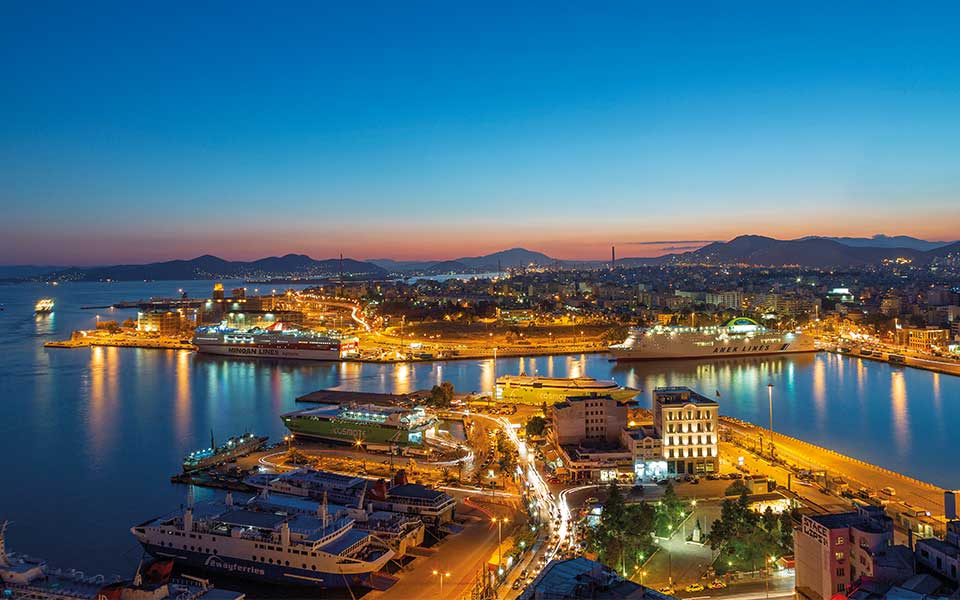Νicolas Bellavance-Lecompte and Quentin Moyse were instantly drawn to the old stone warehouses in the industrial part of Piraeus port as a potential site for their contemporary design gallery Carwan.
The launch in September 2020 (following a relocation from Beirut) of the gallery in a 19th-century commercial warehouse came as little surprise to those who keep abreast of urban developments. The neighborhood outside the port’s gates E3 and E4 has been gaining in popularity in recent years, welcoming a succession of new restaurants and art spaces.
But what exactly is this neighborhood called? Some call it Aghios Dionysios and others Papastratos (at least the part near the historic Papastratos tobacco factory, which moved to Aspropyrgos in 2009).
The Papastratos buildings (where the scent of fresh tobacco was once all-pervasive, reaching the nostrils of passersby in the surrounding streets) have been included in the Piraeus Port Plaza project, which foresees their transformation into offices, shops and cultural spaces. This is part of a more ambitious urban rejuvenation program that also involves interventions in public spaces, the creation of sports facilities and much, much more.
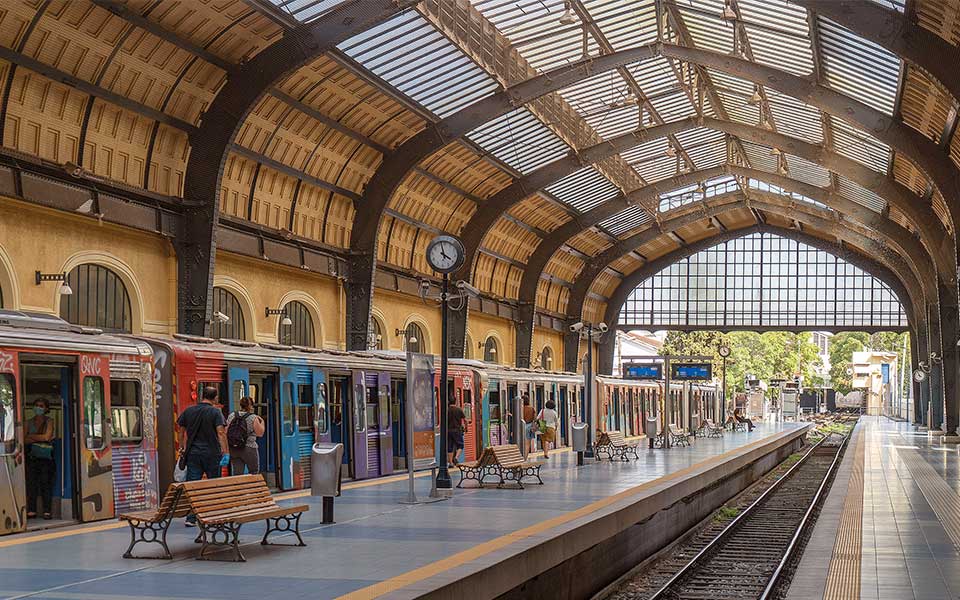
© Perikles Merakos
Add to that the long-expected renovation of Piraeus Tower (built during the 1967-74 military dictatorship along the lines of London’s Marble Arch Tower to house shops and a hotel but never exploited fully), the demolition of dozens of illegal structures around the picturesque Mikrolimano harbor, and the ongoing extensions of the metro (three new stops on Line 3 to Piraeus are already open, with three more to come) and the new tram line, it’s clear that the port city is on the cusp of radical change.
As regards public transportation in particular, the aim is to turn Piraeus into a hub, with the port connecting to the suburban railway, the metro and the tram system.
Yet, despite these efforts to raise the profile of Piraeus, the city remains a bit of a mystery, little-known to most Greeks, even Athenians.
Ask most residents of the capital what they know about Piraeus and they’ll answer, “It’s a port,” because the only reason they ever go there is to board a ferry for Crete or the islands of the Cyclades or Dodecanese. Few Athenians can say which its prettiest neighborhoods are, or where the best tavernas and bars can be found. Few can describe its different areas or recount the highlights of its history. Most Athenians tend to snub the entire area, remembering it only when they have a yen for a seafood meal at a colorful taverna or a coffee with a sea view.
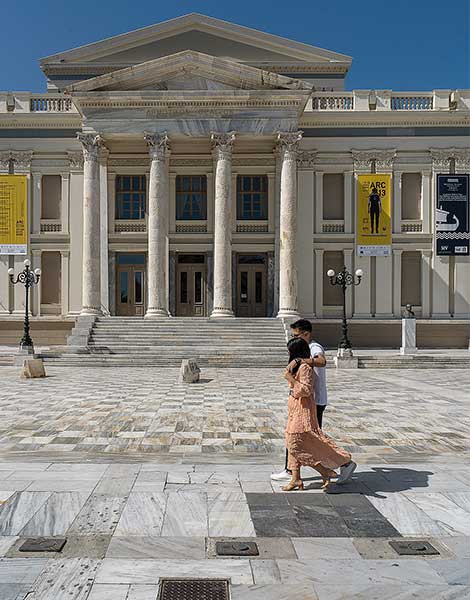
© Perikles Merakos
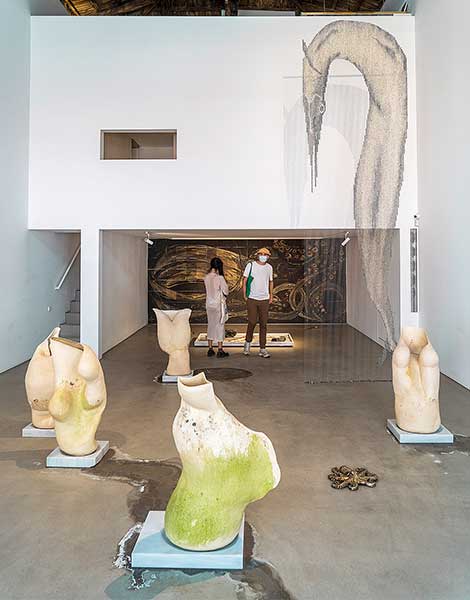
© Perikles Merakos
Piraeus: A Tale of Two Cities
I, too, used to be among these Athenians. Having no friends who lived in Piraeus or who hung out there, I never got to know the city in my youth, but a few years ago I happened to move to Keratsini (a western suburb of Piraeus that’s part of the same municipality as Drapetsona).
I found myself in a new, unexplored city, enchanted by its contradictions and its ability to encompass so many seemingly incongruous elements.
Piraeus is profoundly bourgeois, yet it’s also very working-class. It is demure, in a way, but it’s brash as well. It’s pious, but at the same time it’s racy and provocative.
I’ve found myself driving near the port on December 12 when the city celebrates its patron saint, Saint Spyridon, and getting stuck behind a huge crowd following the procession of his icon, a celebration that included the Piraeus Brass Band, priests in lavish robes and young men and women in traditional dress.
But along with this image of a city closely tied to its traditions, I’ve also seen a drag queen wearing a miniskirt, high heels and ripped stockings tipsily walking along the street and drinking a beer at nine in the morning as I made my way to the post office, with no one even batting an eye.
Piraeus is, after all, a busy port, where the eccentric is part of everyday life, and no one is surprised when nightlife spills over into day-life. But between these two extremes, there is a more accessible Piraeus, one of daily rhythms, a place that is sincere and self-confident and one which loves socializing, the sea and good food.
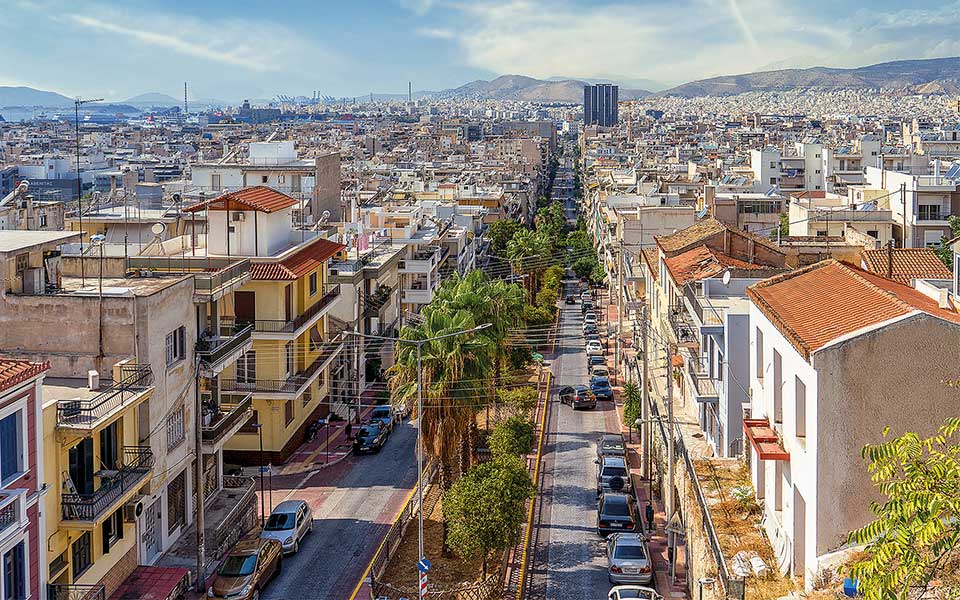
© Perikles Merakos
Piraeus According to locals
Who better to describe Piraeus, though, than the locals themselves? I asked a few friends to contribute to my research by describing their favorite places, and I discovered that these folk really love their city. Unlike Athenians, who usually gripe about their city before describing its best features, the Pireots are unfailingly full of positivity.
Take Katerina, for example. She grew up here and believes that a “walk around Peiraiki with the lit-up walls is simply priceless. And looking at the houses in Kastella. And the Municipal Theater!”
Peiraiki is the seaside neighborhood on the peninsula that juts out between the main port and Zea Harbor. (Here, there are ruins of the fortification walls built in 394-391 BC and named after the 5th-century BC Athenian general Konon.)
Kastella is the hill between the harbors of Mikrolimano and Zea (or Pasalimani); it feels like an island and is known for its church, dedicated to the prophet Elijah (Profitis Ilias).
As for the Municipal Theater, it is a neoclassical jewel built in 1884 and renovated a couple of years ago so it could reassume its role as the centerpiece of the city’s cultural scene. Watching a performance from the plush red seats in one of its boxes is a memorable experience.
For Foteini, who now lives in Oxford, her native Piraeus is all about the sea. “I had a friend who came from a village and always complained that she could never find her bearings in Piraeus. She’d go down Freattydos Avenue and run into the sea. Down Sachtouri, the sea again. Peiraiki, the sea! She was right, but I never got lost.”
One of her favorite memories is linked to – what else? – the sea, and involves little more than sitting at Alexandras Square on a Sunday morning and watching the yachts set sail.
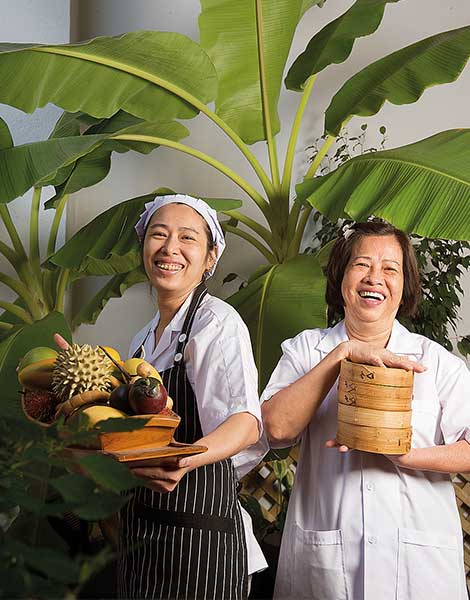
© Perikles Merakos
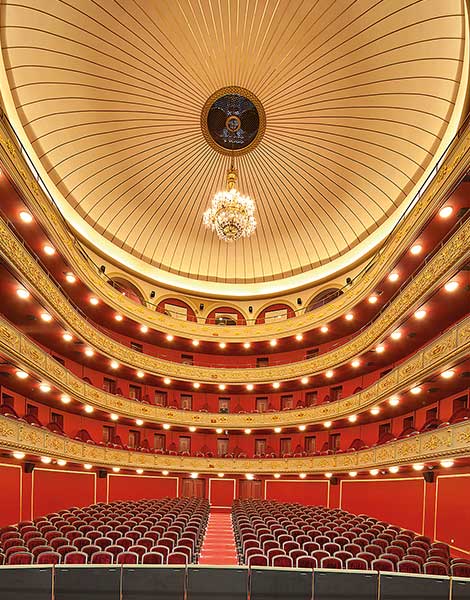
© Perikles Merakos
Alexandras Square, located between Zea and Votsalakia Beach, is a nice spot to relax and to learn a bit of history from the sculpture “Pyrrhic Flight” by Panagiotis Tanimanidis. This large-scale modern stainless steel sculpture pays tribute to the victims of the Pontic Genocide, the systematic massacre of Black Sea ethnic Greeks by Turkey in the first half of the 20th century, the survivors of which settled in large numbers in Piraeus, along with Greek refugees from Asia Minor.
Nikos, a photographer who’d spent years visiting the port city to explore its obvious and less obvious attractions, decided to settle here a year ago. For him, Piraeus is “a surreal confusion of images. Super-luxurious cars jostling for parking spots, coffee, garlic, fried food, octopus on the grill, alcohol, rotting wood of abandoned buildings, iodine and fish!”
It is, he says, a journey through time, “from fishermen untangling their nets just like in the ‘old days,’ to beefy parking valets with identical haircuts, beards and steely eyes.”
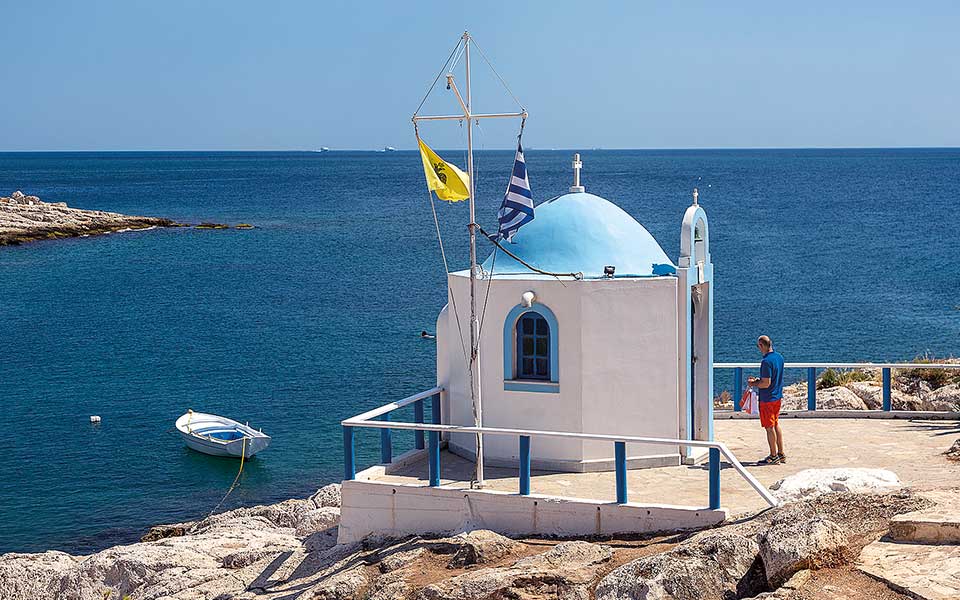
© Perikles Merakos
Last but not least, Elisavet is a retired customs officials who worked at the port for 40 years. For her, Piraeus equals good food: Kosmidis in Drapetsona for proper halva, Fotis’ Grill House near the train station “for the best souvlaki in the area,” and Giorgos, a deli in the Politis arcade that she loves first for the people who run it (Aram and Kevork Avakian are a font of information on the history of the Armenian community in Piraeus) and then for its delicious meat products, like the soutzouki (a dried spicy sausage), kavourmas (meat cooked confit-style), and beef pastourmas (beef cured with spices).
Katerina is also a fan of Mandragoras, a grocery store on Gounari Street that opened 65 years ago as a run-of-the-mill spice shop but has evolved into a gastronomic delight, with a large range of olive oils, olives, dried fruits (such as figs and dates), condiments (including pickled caper leaves), rusks and artisanal cheeses.

© Perikles Merakos
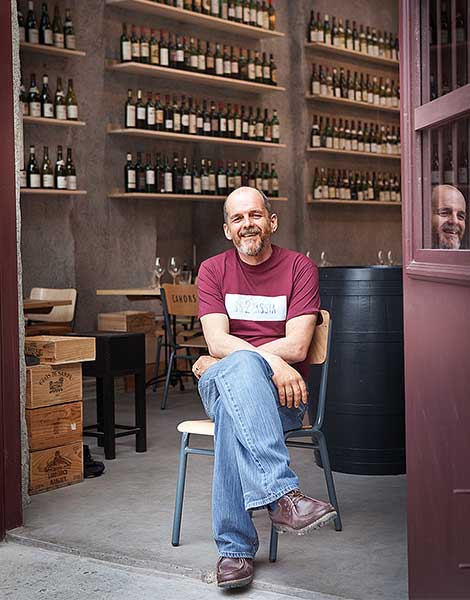
© Perikles Merakos
Where to Eat: Recommended Restaurants in Piraeus
It’s worth adding to the list that Elisavet gave us, because if there’s one thing you can really enjoy in Piraeus, it’s the food! Needless to say, there are dozens of seafood restaurants and tavernas, but there are four I recommend heartily.
Varoulko Seaside, in the Mikrolimano area, has been awarded a Michelin star and is run by one of Greece’s most highly respected chefs, Lefteris Lazarou, who presents a high-caliber menu that is constantly being updated.
With less of a wow factor, but personally my favorite, Yperokeanio, near the Chatzikiriakeio Foundation, serves such delights as proper bouillabaisse fish stew, grilled lobster, and cuttlefish with tahini.
Located next door to the Hellenic Naval Academy, Margaro is something of an institution, offering a small selection of extremely fresh seafood (shrimp, red mullet, langoustines in winter and on occasion lithrini fish, or the common pandora, and a really good Greek salad.
Lastly, a long-standing local favorite is Riris, a taverna-kafeneio on Kleisovis Street that is so homey and low-key, it could be confused with my aunt’s kitchen were it not obviously a place of business. Musts include the cod with garlic sauce, the grilled octopus and the mussels.
A standout among the city’s many burger joints, American Toast House, on Defteras Merarchias Street, which opened in 1972 and has survived the competition with good grace, looks like a typical American diner, complete with red leather banquettes and a logo consisting of a blonde about to devour a burger.
Bar Bee Kiou, in contrast, is modern and very hip, and has a loyal following of fans who flock here to Freattydos Avenue from all over Attica.
If you enjoy ethnic food, Lechmajoun in Pasalimani does exactly what it says on the sign, serving yummy flatbreads with a spicy ground-meat topping.
For amazing piroshki, Georgitis is the place, near Pigada Square, while Rouan Thai in Trouba – a neighborhood that was notorious for its brothels in the late 1960s – serves the best Thai food in the area.
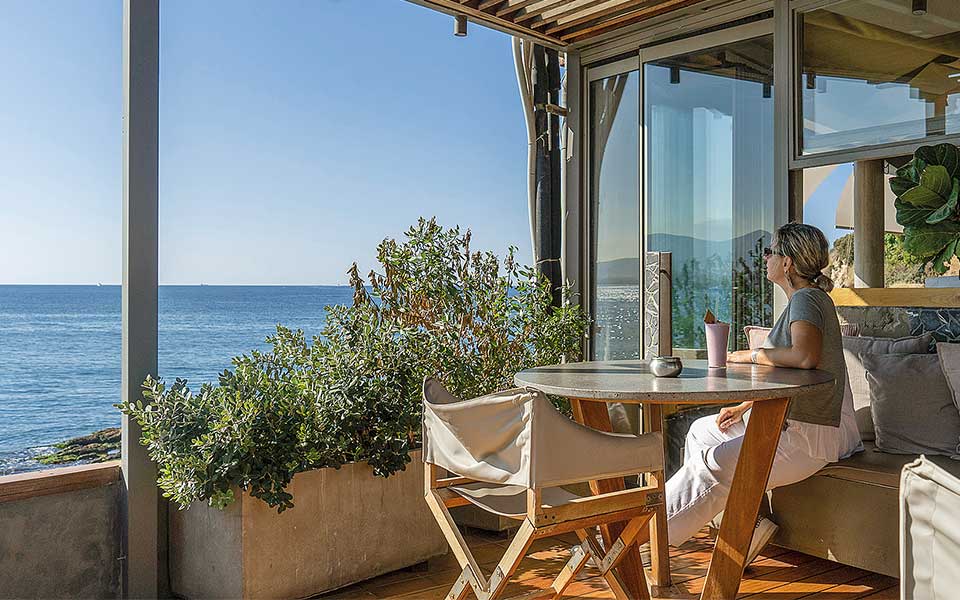
© Perikles Merakos
Where to Drink: Recommended Cafés and Bars in Piraeus
There are also hundreds of all-day cafés and bars, although the veteran of the bunch is probably Istioploikos (Piraeus Sailing Club) in Mikrolimano, with a lovely view of the sea and the yachts berthed in the marina.
At Pasalimani, Kafe ton Aisthiseon (Café of the Senses) or just Kafe on Kountouriotou Street might be the city’s favorite, with gray-haired patrons who have been coming here since before they started shaving. Right next door, Reservoir is another local hangout, where regulars often burn the midnight oil arguing about cinema over glasses of whisky.
A relatively new arrival is Filotimos, a bistro located next to the Municipal Theater, perfect for a hot drink (tea, coffee, organic cocoa) or aged tsipouro and a meze.
Along with these, there’s also Paleo, an oasis in the Papastratos neighborhood that’s especially popular with the wine crowd, and right next to that, Bon Bon Fait Maison, which produces high-quality ice cream and sweets made with local ingredients and French techniques.
My personal favorite among the many, many eateries and watering holes in Piraeus is Kafeniote. Located just below Profitis Ilias Church, it’s a haven on sunny days when the seaside places are all jam-packed and only here can you find a table and enjoy a glass of good raki, a plate of Cretan apaki (cured pork) and a slice of fried cheese along with, if you’re lucky, some live rebetiko music.
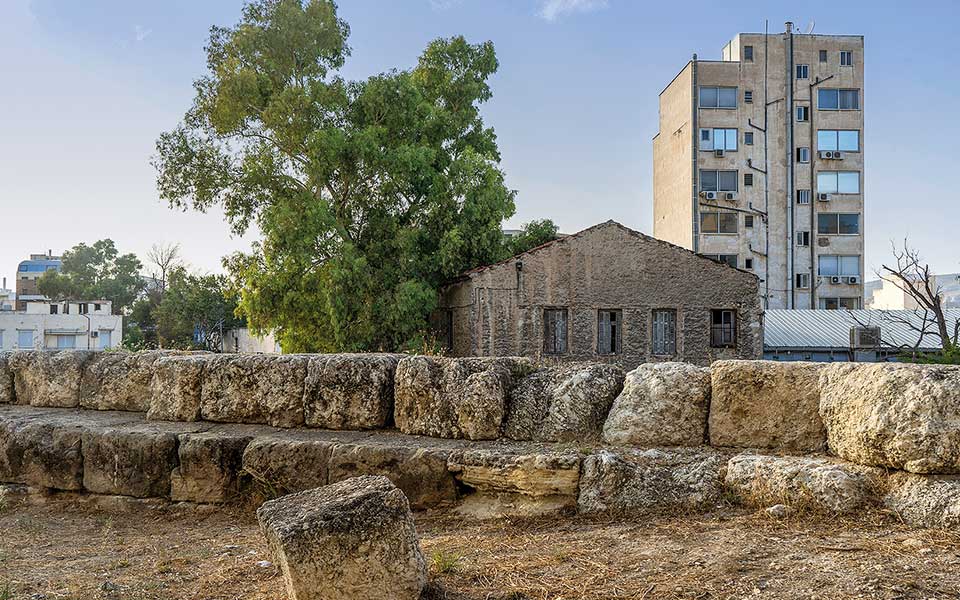
© Perikles Merakos
Bouzoukis and bicycles
So, enough about meals, coffee and drinks. It’s easy to get carried away with the food and beverages because there are so many inviting establishments in Piraeus, but if you only eat and drink, you’ll miss the essence of the place, which is best understood walking around and exploring.
One of my favorite things to do in Piraeus is to wander, marveling at all the curious sights – like the magical mecca of old electronic devices near Pasalimani where they repaired my mom’s old Sony turntable and I found neolithic TV sets and pocket radios. The old shuttered factories and workshops in Keratsini and Drapetsona are beguiling, particularly since no one bothered to take down their now meaningless signs.
And I love the galleries and studios (other galleries, aside from the newcomer Carwan, include ENIA, Rodeo, and The Intermission) that keep popping up on streets that were (and still are) frequented by workers of the factories in this industrial area.
Piraeus has so many things to offer that the list is practically endless. Like walking along Neorion Street and stumbling on the instrument workshop of the same name, where craftsmen working with pernambuco wood and redwood make bouzoukis, guitars and baglamas, paying homage to the rebetiko music scene that once flourished here. Or jumping onto a friend’s motor scooter and driving along the port from gate E2 to E9, an experience that’s worth doing by bicycle, too.
Or coming out of the Zea Cinema and taking a moment to see the yachts bobbing in the marina before stopping, on the way to the car, for another look at the 2,300-year-old ancient theater of Zea (where else can you experience anything like that?).
But nothing that I or anyone else tells you about Piraeus can replace experiencing it. You need to walk around the city and get a feel for it yourself, using your instincts and your senses to guide you.
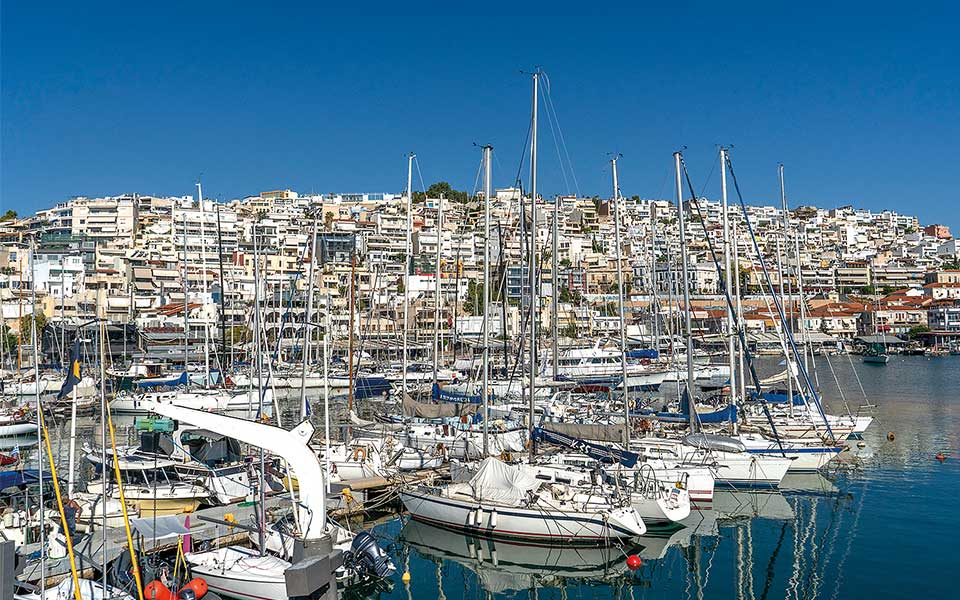
© Perikles Merakos
TWO GREAT PIRAEUS WALKS
Walk A: Start at Polidefkous, one of the trendiest streets in Piraeus right now, and take a peek at its galleries, bars and eateries before continuing onto Gounari. Explore the small lanes running off this street and enjoy the spice shops and delis (this is a slice of the old rough-and-tumble Piraeus).
Gounari will take you down to Gate E9 at the port, where you can take the road past Aghios Spyridonas Church and turn left for the Chatzikiriakeio district, where a fine meal awaits at one of the seafood tavernas. Wrap up your walk with a stroll through Peiraiki, keeping an eye out for sunbathing eccentrics on the rocks (it happens).
Walk B: Alternatively start your route at Profitis Ilias Church in Kastella, and head down to Mikrolimano to take in the sailboats before continuing to Votsalakia Beach and Pasalimani, admiring the grand old mansions along the way. Pass along Harilaou Trikoupi to end your walk at the Church of Aghios Nikolaos of Hydra, patron saint of sailors and the beginning and end of Piraeus.

© Olylmpia Orneraki
2. The Piraeus Archaeological Museum
Piraeus tends to be a noisy city, so consider a visit to its Archaeological Museum as an opportunity for a break from the din, and if you visit on a weekday, you might even be on your own. While it’s not a very big museum, its collection is rewarding and includes such outstanding pieces as the temple-shaped funerary monument to Niceratus and his son, Polyxenus (originally from Istros on the Black Sea), which was probably inspired by the Mausoleum at Halicarnassus.
You’ll also see some very interesting displays on the first floor, namely a collection of bronze sculptures (including figures of Apollo, Artemis, and Athena) found in 1959 below the corner of Vasileos Georgiou and Filonos streets in an ancient warehouse where they’d been stored during the 86 BC siege of Piraeus by Sulla.
Don’t leave without visiting the courtyard, where you’ll see the ruins of the 2nd century BC Theater of Zea, nestled between the apartment blocks. (To read more about discovering the ancient ruins found in Piraeus, click here).
31 Harilaou Trikoupi, Tel. (+30) 210.452.1598, Open Wed-Mon 08:00-15:30

